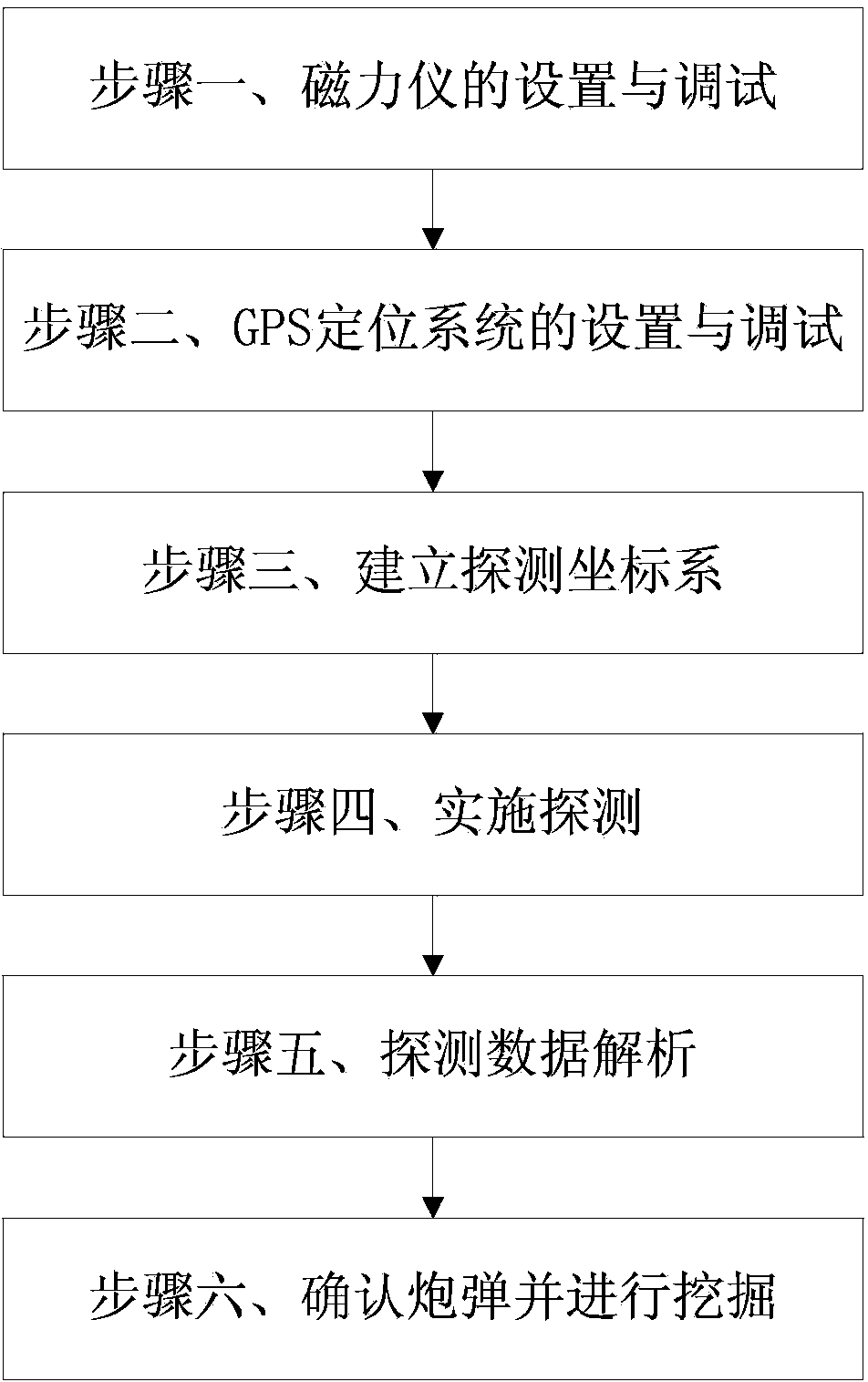Method for detecting Japan abandoned chemical weapons in water areas
A chemical weapon and detection area technology, applied in the field of detection of Japanese abandoned chemical weapons in waters, can solve the problems of no more than 20 cm, and no solution and no application value for Japanese abandoned chemical weapons with a depth of more than 20 cm, and achieves good applicability. , The effect of accurate positioning accuracy and high work efficiency
- Summary
- Abstract
- Description
- Claims
- Application Information
AI Technical Summary
Problems solved by technology
Method used
Image
Examples
Embodiment Construction
[0023] The specific implementation of the present invention will be further described below in conjunction with the accompanying drawings and examples. The following examples are only used to illustrate the technical solutions of the present invention more clearly, but not to limit the protection scope of the present invention.
[0024] Such as figure 1 As shown, the underwater magnetometer of the present invention is connected with the converter, and the converter is connected with the underwater magnetometer data processing system again, and the GPS fixed station and the GPS mobile station form a GPS positioning system, and the GPS mobile station and the underwater The magnetometer data processing system is connected.
[0025] Such as figure 2 As shown, the technical scheme of the concrete implementation of the present invention is: a kind of method for detecting Japanese abandoned chemical weapons in waters, comprises the following steps:
[0026]Step 1, the setting and ...
PUM
 Login to View More
Login to View More Abstract
Description
Claims
Application Information
 Login to View More
Login to View More - R&D
- Intellectual Property
- Life Sciences
- Materials
- Tech Scout
- Unparalleled Data Quality
- Higher Quality Content
- 60% Fewer Hallucinations
Browse by: Latest US Patents, China's latest patents, Technical Efficacy Thesaurus, Application Domain, Technology Topic, Popular Technical Reports.
© 2025 PatSnap. All rights reserved.Legal|Privacy policy|Modern Slavery Act Transparency Statement|Sitemap|About US| Contact US: help@patsnap.com


